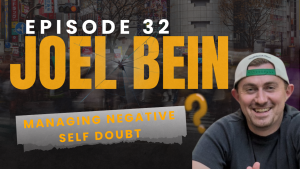Performance conversations can feel fraught, yet when leaders leverage structured feedback models informed by positive psychology and organizational behavior, these conversations can bolster, not erode, employee morale. Drawing on studies of leadership communication, feedback dynamics, and workplace well-being, this article explores how frameworks like the SBI feedback model and principles aligned with leadership communication and constructive criticism examples can shift performance conversations from tension into trust.
A broader business management lens helps connect theory, such as psychological safety and perceived support, with practical communication tactics in feedback contexts. This narrative feature unpacks evidence from leadership research and trade practice to offer clear, actionable guidance.

Why Performance Conversations Trigger Tension
Performance discussions often trigger anxiety because they can be perceived as threats to personal identity or status. Organizational behavior research highlights that feedback unsafely delivered tends to raise defensiveness, lower engagement, and undermine morale (Doucette, 2017). Employees may mentally retreat or become disengaged when feedback feels vague or personal.
Positive psychology adds nuance to this picture: individuals perform better and stay engaged when feedback is delivered with clarity, respect, and a focus on growth (Edmondson, 1999; Baer & Frese, 2003). Trust and forward-looking framing foster resilience, making feedback a motivator rather than a demoralizer. These findings underline that how a conversation is framed greatly shapes its emotional and behavioral outcomes.
Frameworks That Turn Conflict Into Clarity
The SBI Feedback Model: Structure That Reduces Stress
The SBI feedback model, Situation, Behavior, Impact, provides a reliable structure for delivering feedback that limits defensiveness by anchoring comments in observable facts and effects (Center for Creative Leadership, 2025; Careerminds, 2024). For example, saying “During yesterday’s team update meeting (Situation), you interrupted the presenter twice (Behavior), which disrupted flow and clarity (Impact)” avoids personal judgment while illustrating the issue clearly.
Empirical and practitioner-oriented accounts show SBI yields more productive feedback dialogues and helps preserve employee morale. Leaders who use it report that recipients engage more openly and reflect more meaningfully on their behavior, rather than immediately reacting or deflecting (Careerminds, 2024). This clarity cultivates more constructive communication cultures.
Radical Candor and Psychological Safety: Foundations of Honest Dialogue
Radical Candor, to care personally while challenging directly, is a leadership communication style that blends empathy with candor in feedback delivery (Vich & Kim, 2017; Radical Candor blog, 2025). This approach builds trust and mutual respect, allowing leaders to issue clear feedback without damaging morale. It emphasizes the balance between directness and humanity.
But Radical Candor works best within an environment of psychological safety, where employees feel secure expressing ideas or admitting mistakes. Research on the interplay of psychological safety and radical candor shows that when both are present, teams show higher trust, engagement, and retention (Williams, 2024). Without safety, direct feedback, even with caring intent, can still be perceived as criticism or threat.
Insights from Positive Psychology and Perceived Organizational Support
Positive Psychology’s Role in Feedback Conversations
Positive psychology research underlines how elements like optimism, hope, and recognition contribute significantly to workplace motivation and well-being (Baer & Frese, 2003). When leaders weave positive reinforcement into feedback conversations, even when critiquing, employees are more likely to stay motivated and engaged. Feedback becomes part of a supportive dialogue rather than a corrective monologue.
Embedding positive framing also helps reinforce employee morale by aligning performance conversations with intrinsic motivations. Rather than stopping performance, this framing energizes it, keeping focus on growth, future actions, and shared purpose.
Perceived Organizational Support Strengthens Morale
Perceived organizational support, the degree to which employees feel valued and supported by the organization, also significantly influences morale (Nembhard & Edmondson, 2006; Gnepp, et al., 2020). When feedback includes recognition of employee effort and demonstrates concern for their development, it strengthens that sense of support.
Practical guidance from HBR and other trade sources shows that feedback coupled with acknowledgement fosters loyalty and reduces turnover. When employees sense the feedback comes from a place of support, they treat it as development rather than criticism (Gnepp, et al., 2020).

Protecting Morale While Driving Performance
Combining these frameworks and insights yields actionable tactics:
- Use the SBI model to structure feedback around observable facts and impacts (Center for Creative Leadership, 2025; Careerminds, 2024). This approach keeps feedback clear, objective, and less likely to trigger defensiveness.
- Apply Radical Candor: lead with personal care before offering direct feedback (Vich & Kim, 2017; Radical Candor blog, 2025). It underscores respect even when discussing challenges.
- Cultivate psychological safety by normalizing mistakes and inviting input. This prepares employees to receive feedback openly (Williams, 2024).
- Incorporate positive psychology, framing critiques within appreciation and future growth, which sustains morale (Baer & Frese, 2003).
- Reinforce perceived organizational support, by acknowledging contributions and framing feedback as development, not reprimand (Gnepp, et al., 2020; Nembhard & Edmondson, 2006).
When leaders consistently apply these elements, performance conversations become trust-building processes rather than episodes of tension.
FAQs
What is the SBI feedback model?
The SBI feedback model stands for Situation, Behavior, Impact. It encourages leaders to describe the context, the observable action, and its effect. This format reduces defensiveness and enhances clarity in feedback exchanges (Center for Creative Leadership, 2025; Careerminds, 2024).
Can you provide examples of constructive criticism delivered well?
Yes. Using SBI, a leader might say: “In last Monday’s client meeting (Situation), you interrupted the speaker several times (Behavior), which disrupted the flow and made colleagues hesitant to contribute (Impact). Let’s try pausing before responding next time so others can finish their thoughts first.”
How does leadership communication help morale?
Combining SBI’s clarity with Radical Candor signals both caring and honesty, while psychological safety ensures vulnerability is safe. This reinforced with positive framing and support enhances morale by making feedback feel respectful, fair, and intended for growth (Vich & Kim, 2017; Williams, 2024; Gnepp, et al., 2020).
Why include positive psychology and support in feedback?
Positive psychology elements, such as expressing optimism and recognition, engage intrinsic motivation, helping employees view feedback as positive development. When feedback is delivered along with organizational support signals, it strengthens trust and retention (Baer & Frese, 2003; Nembhard & Edmondson, 2006).
Key Takeaways
The shift from tension to trust in performance conversations lies in the combination of structure, empathy, and culture. When leaders use the SBI feedback model, practice Radical Candor, foster psychological safety, and embed constructive criticism examples within a framework supported by positive psychology and organizational support, they preserve and uplift employee morale. This approach transforms performance conversations into engines of trust and development, not anxiety.





































